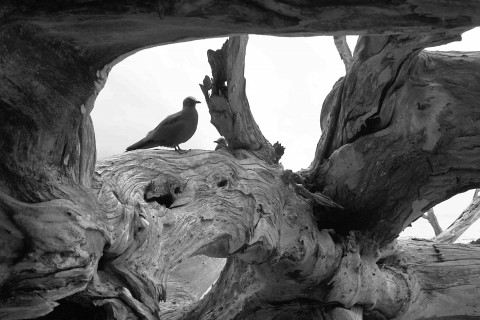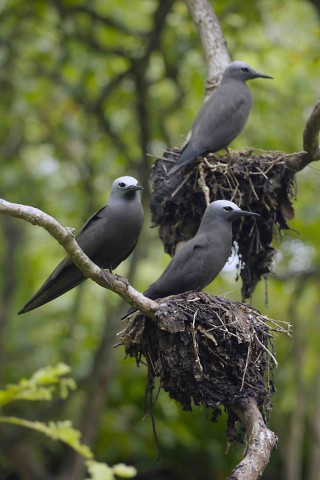BIOT MPA Survey Expedition 2015 - Day 4 - Moresby, Parasol and Petit Bois Mangue

Early start off the boat headed for Moresby. Wanted to get around the island as close to low tide as possible as the northern edge is a steep rocky beach; at high tide the waves break straight into the mangrove tree branches. That’s why we’ve selected this island so that we can get the red-footed booby colonies in the mangroves on Trekker. Red-footed boobies love nesting in mangrove trees and there is only one stand in Peros Banhos – and it is here on Moresby Island. Even at low tide the walk around the perimeter is challenging. I have to wade at least a third of the back edge of the island to get around tree branches, all the time trying to ensure I don’t go so deep as to swamp the trekker gear. The mangroves are there and as expected – full of nesting red-footed booby. Whilst walking the final stretch on the western edge of the island I come across the minimal remains of a yacht wreck – the Black Rose of Port Vila – have to look that one up and see if there is a story behind it!

After walking the perimeter of the island we decide to cut through the middle and 10 meters in from the edge encounter an abandoned lean to. Evidence of a previous illegal fishing camp. Fortunately regular island patrols are carried out and active camps like this are rarely found now. A little further on in the centre of the island I almost step on something white underfoot. Closer inspection reveal it to be the skull of a turtle with the bones of its shell and rib cage spread neatly around. Evidently a nesting turtle lost its way and became stranded here in amongst the birds nest ferns and died.
On to Ile Parasol next, a short walk around this island and very different to Moresby. Only a stand of tall palms on the western side. The rest of the island is mainly grassland, infested with invasive dodder vine, with a ring of heliotrope and scaevola bushes. The bushes again preferred habitat for red-footed booby. And there were plenty in residence. By the time we get back to the boat the wind has picked right up and it’s a bit of a battering fighting out through the waves to the boat for the transit to the next island on our list – Petit Bois Mangue.

Petit Bois Mangue has some beautiful huge old hardwoods growing on it. We anchor on the north eastern side. Away from the now howling south westerly wind it is calm and peaceful as we swim over the spurs and grooves in to shore. It is still mid-tide and there is plenty of water clearance for us to swim straight to the gravelly beach. There we unpack the Trekker and set off exploring this beautiful island.
Beautiful from the smallest inhabitants – like the small Strawberry Hermit Crabs, to the winged with all the nesting lesser Noddy Terns, to huge with the immense Pisonia trees providing habitat for the little noddy to nest. And this they do in sizeable colonies. This brought us to the end of a long day tramping the Trekker around these beautiful seabird islands.
On our return to the research vessel we find that the other teams have had a successful day too. With the Shallow Catlin Survey Team covering three sites around Moresby and Ile de la Pas and the deep team deploying the ROV for the first time to examine coral in the mesophotic zone beyond conventional scuba diving depth. An all-round successful day despite strong winds and regular downpours!

